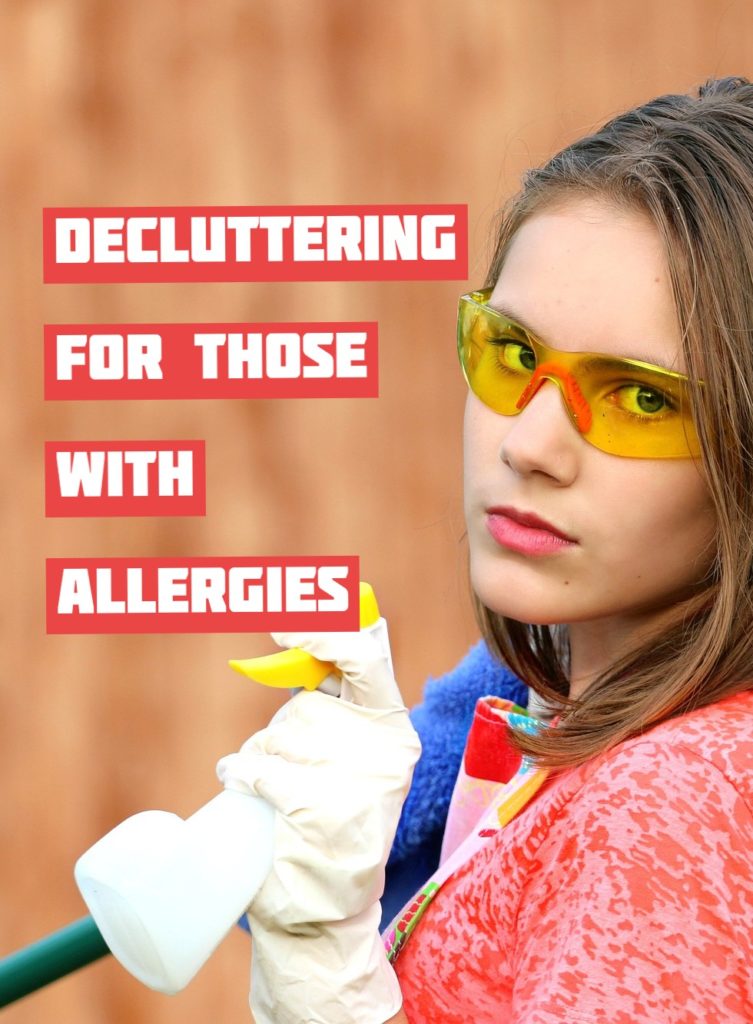
(Guest post by Holly Vargas)
As we move towards spring, a season of regeneration and fresh starts, you might be tempted to turn your attention to sorting out your home.
Through winter, the accumulation of clutter is almost inevitable. With Christmas bringing a host of new belongings into your home, you may not have had a chance to properly sort them out, especially if the winter weather has kept you indoors, hibernating from the cold.
Now is a great time to look at decluttering your home, but for some, it isn’t straightforward. The ACAAI reports that more than 24 million people in the United States suffer from allergies, 6 million of those being children. That makes a declutter job challenging, with increased risks.
We’ve already outlined the benefits of a declutter in our article entitled ‘5 Benefits of Konmari Tidying’ but now we have put together a handy guide on decluttering your home even if you suffer from allergies. By following our tips, you’ll soon be throwing out the old and ushering in the new.
Choose Your Day
This is critical to decluttering if you have allergies: choose a day when it is cold outside, or even better if it has been raining. The amount of pollen in the air will be reduced meaning any additional dust you create won’t be already adding to a tough atmosphere.
Prepare Properly
Usually, during a decluttering, you’re advised to vacuum* after the actual declutter, but if you suffer allergies, we recommend doing it before. This will reduce the number of dust particles you are exposed to.
Also, consider turning off your air conditioning unit. How to Clean Stuff explains how your AC moves dust around and if you have it on whilst cleaning it is likely to throw dust in the air for you to breathe in. It might be advisable to wear gloves and even a mask.
Take the Opportunity
If your decluttering involves moving around boxes and furniture, take the opportunity to look for other cleaning requirements. Mold is a big problem for those with respiratory problems and can build up in gaps between furniture and walls, especially in colder rooms.
You don’t have to use chemical solutions to alleviate the problem. Andy Floyd’s post on HomeServe Living details how a simple solution of white vinegar* can get rid of mold – something that is much friendlier to those with allergies. Giving the walls a clean is certainly advisable and, depending on the severity of any allergies or breathing problems, a dust mask might be advisable.
Be Ruthless
The actual decluttering is going to require a degree of will power from you. With every item you take hold of, ask yourself two questions: firstly, ‘do you use it?’ If you haven’t seen the item for six months or can’t see a practical use for it in the next six months, get rid of it.
Secondly, ask yourself ‘if this item will cause your allergies to flare up?’ Remember to focus on items such as body lotion and other beauty products as well. How Stuff Works lists the top ‘5 Allergens in Moisturizers’ and you should be familiar with the list, even if in the past you haven’t had issues with that brand before.
Vacuum Again
You may not have had the vacuum* out twice in a day before, but make sure after everything is put back and the items you are throwing away or giving away have gone, that you vacuum thoroughly. Not just the floor either – soft furnishings, window ledges and any other surface likely to have caught fresh dust.
PIN IT:

